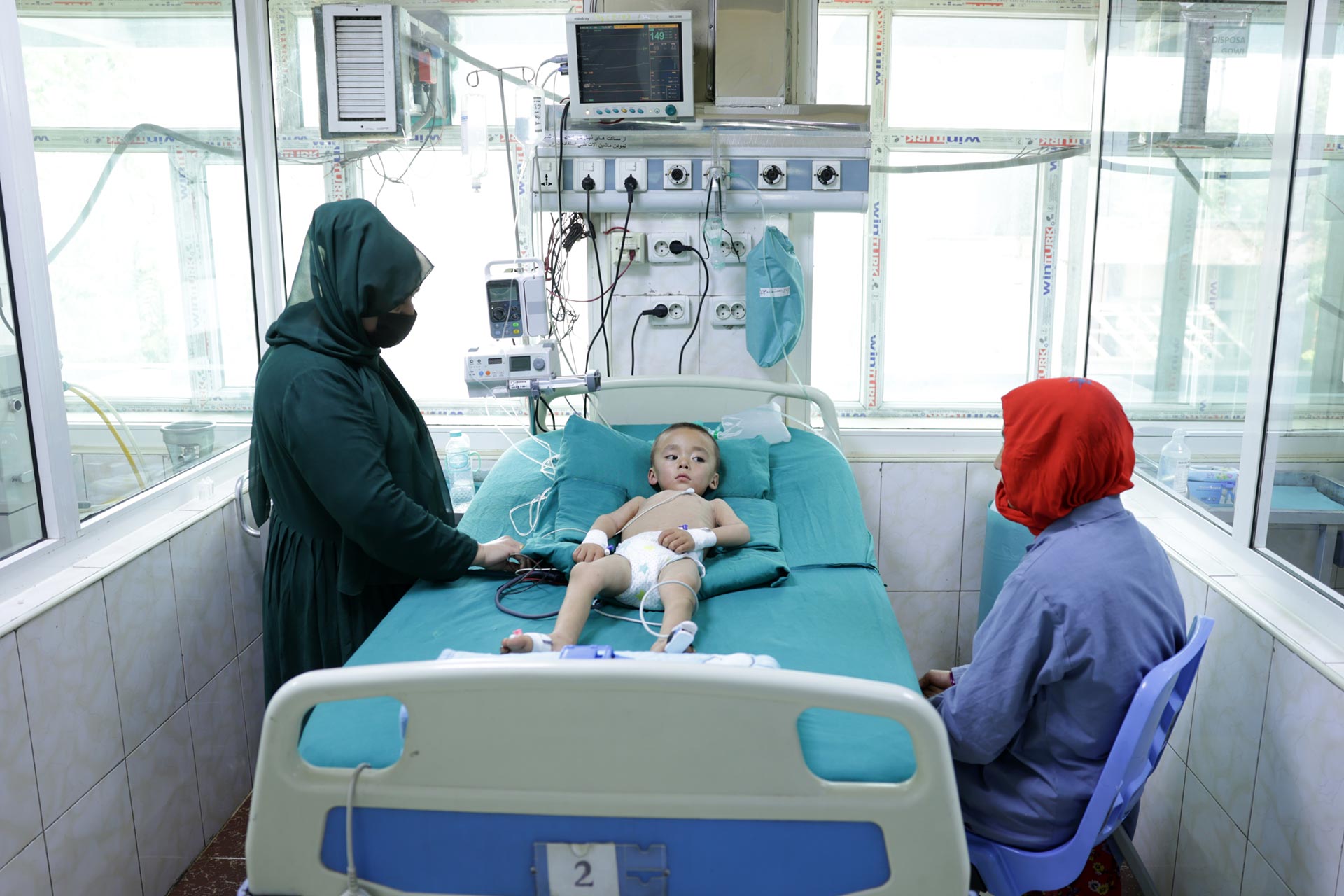 A young child rests in the ICU at Indira Gandhi Institute of Child Health in Kabul, receiving critical care and oxygen therapy
A young child rests in the ICU at Indira Gandhi Institute of Child Health in Kabul, receiving critical care and oxygen therapy
31 July 2025, Kabul, Afghanistan – The new oxygen plant – the result of a partnership between the World Health Organization (WHO) and the European Union (EU) –at the Indira Gandhi Institute of Child Health (IGICH) in Kabul is giving Afghan children a better chance at life. Opened on 6 May 2025, the plant is already making a major difference.
It can produce up to 210 oxygen cylinders a day, enough to meet the needs of the hospital and support nearby health centres. For a facility that once depended on unreliable oxygen deliveries, this is a game changer.
“There were times when oxygen delivery trucks came late,” said Dr Naimullah Safi, head of IGICH Intensive Care Unit (ICU). “We lost many children during those waiting hours. Children who could have been saved if oxygen had arrived just a bit earlier.”
Families were sometimes asked to find oxygen on their own. It was stressful, costly, and heartbreaking for those who couldn’t afford it. Now, the ICU has a steady oxygen supply piped directly to the bedsides. Other departments, like the emergency and cardiac wards, also benefit from the plant thanks to large oxygen balloons that store and distribute the gas where it’s needed.
Abdurahim, a father from Parwan province, shared his story: “My 4-year-old son was in the ICU for 8 days with measles and a serious lung infection. He needed oxygen the whole time. The doctors and nurses cared for him so well and with oxygen available he recovered. We are so thankful. It saved his life.”
Since the plant opened, the hospital has seen a 30% drop in ICU deaths. It has also saved money by reducing the need for outside oxygen suppliers. And extra oxygen is now being shared with other hospitals in Kabul during emergencies.
"The oxygen plant, funded by the European Union, stands as a clear testament to the EU's unwavering commitment to the health and well-being of the Afghan people. We are confident it will save countless lives of children," said EU Chargée d’Affaires in Afghanistan Veronika Boskovic Pohar.
IGICH medical director Dr Khaibar Sahak notes that “the oxygen plant doesn’t just serve the Indira Gandhi Children’s Hospital but is also helping other major hospitals like Wazir Akbar Khan, Afghan-Indonesia and Shaikh Zayed”.
WHO Representative in Afghanistan Dr Edwin Ceniza Salvador explained the broader impact. “This oxygen plant is saving children’s lives every day. Doctors can now give the right care when it’s needed and families no longer have to worry if oxygen will arrive on time. This is a major step forward for child health in Afghanistan.”
Funded by the EU, the oxygen plant is an example of how solid partnerships and smart investments are helping build a more robust health system in Afghanistan, starting with its youngest and most vulnerable patients.



